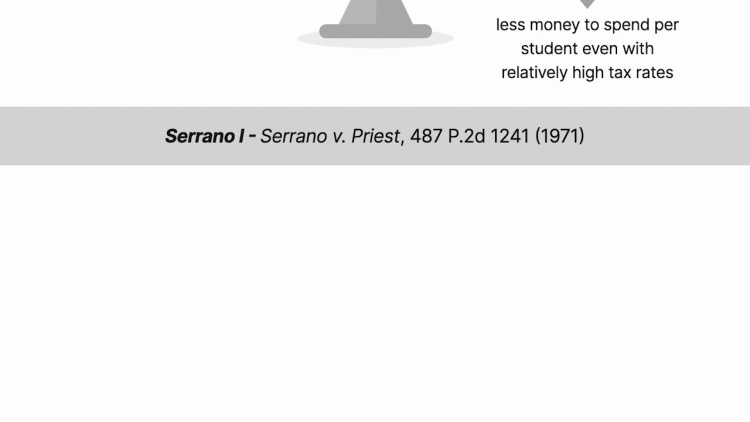Serrano v. Priest
California Supreme Court
557 P.2d 929 (1976)
- Written by Robert Cane, JD
Facts
California funded its school districts using the foundation approach. The state provided a base level of financial support and local property taxes provided additional support based on the needs and desires of the local community. This system led to vast disparities in local tax rates. Poorer districts needed to levy taxes at a significantly higher rate than wealthier districts to reach required funding levels. California made significant changes to its public-school financing system in passing Senate Bill 90 and Assembly Bill 1267 after the earlier Serrano v. Priest, 5 Cal. 3d 584 (1971) decision, in which the court identified constitutional deficiencies in California’s financing system. However, the system remained based upon the foundation concept albeit with increased levels of funding aimed at reducing disparities among school districts. Districts were categorized into basic-aid districts for wealthier communities and equalization-aid districts for poorer communities. Basic-aid districts were still able to reach the foundation level of funding with significantly lower tax rates than the equalization-aid districts. The financing system was challenged as a violation of the state’s equal-protection clause. The trial court applied a strict scrutiny standard and determined that the public-school financing system was unconstitutional. The judgment was appealed to the California Supreme Court.
Rule of Law
Issue
Holding and Reasoning (Sullivan, J.)
What to do next…
Here's why 899,000 law students have relied on our case briefs:
- Written by law professors and practitioners, not other law students. 47,000 briefs, keyed to 994 casebooks. Top-notch customer support.
- The right amount of information, includes the facts, issues, rule of law, holding and reasoning, and any concurrences and dissents.
- Access in your classes, works on your mobile and tablet. Massive library of related video lessons and high quality multiple-choice questions.
- Easy to use, uniform format for every case brief. Written in plain English, not in legalese. Our briefs summarize and simplify; they don’t just repeat the court’s language.






